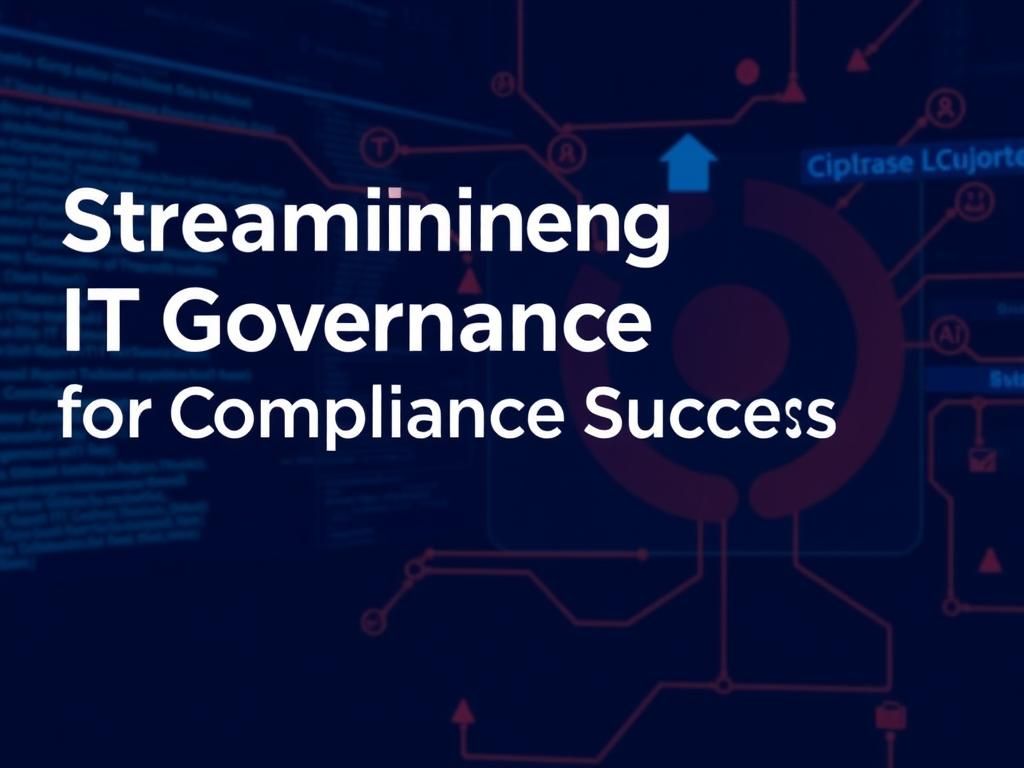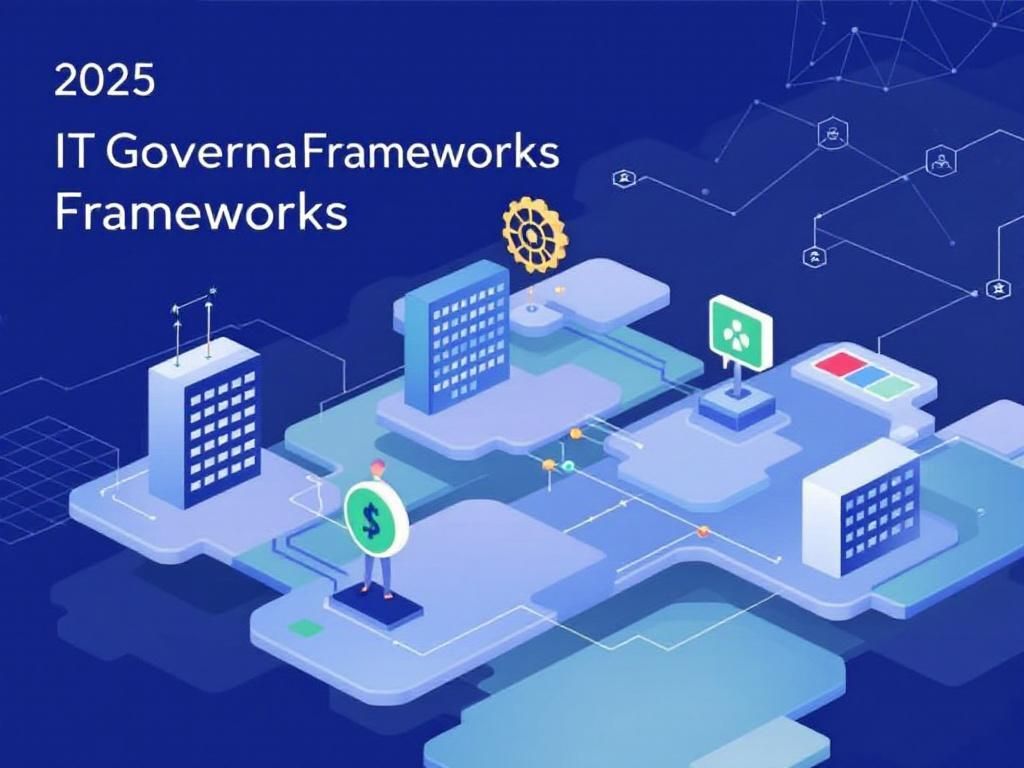Essential IT Governance Best Practices for Regulated Industries
Discover key IT governance best practices specifically designed for regulated sectors to ensure compliance and enhance operational efficiency.

In an era where technology is rapidly evolving, organizations in regulated sectors face unique challenges in aligning their IT governance with both compliance requirements and business objectives. The intersection of regulatory mandates and technological innovation creates a critical landscape that necessitates a robust framework to mitigate risks, enhance performance, and ensure accountability. This article delves into the best practices for IT governance in such sectors, offering insights and strategies to help organizations thrive while adhering to stringent regulations.
Table of Contents
Understanding IT Governance
IT governance refers to the framework that ensures that IT investments support business goals. More than just a compliance exercise, effective IT governance incorporates strategic alignment, risk management, resource management, and performance measurement. In regulated sectors—such as healthcare, finance, and energy—where adherence to laws and standards is paramount, the significance of IT governance is even more pronounced.
Key Components of IT Governance
- Strategic Alignment: Ensuring that IT projects and initiatives are in line with business objectives.
- Value Delivery: Guaranteeing that IT delivers value to the organization through effective management of resources.
- Risk Management: Identifying and mitigating risks associated with IT processes and projects.
- Resource Management: Optimizing the use of IT resources and capabilities.
- Performance Measurement: Evaluating the efficacy of IT investments through metrics and KPIs.
Best Practices for IT Governance in Regulated Sectors
Implementing IT governance in regulated sectors requires a deliberate approach. Here are some best practices to consider:
1. Establish a Governance Framework
A well-defined governance framework provides the structure for decision-making and accountability. It should include:
- Governance policies that outline roles and responsibilities.
- Processes for risk assessment and compliance monitoring.
- Documentation standards to ensure transparency and traceability.
2. Involve Stakeholders
Incorporating input from various stakeholders is crucial for effective IT governance. Stakeholders may include:
- Executive Leadership
- IT Management
- Compliance Officers
- End Users
Regular communication and collaboration can help align IT initiatives with business goals and regulatory requirements.
3. Adopt a Risk-Based Approach
Organizations should adopt a risk-based approach to IT governance. This involves:
- Conducting regular risk assessments to identify vulnerabilities.
- Prioritizing risks based on their potential impact.
- Implementing controls to mitigate identified risks.
4. Implement Change Management Processes
Change is inevitable in any IT environment. Establishing robust change management processes helps organizations:
- Minimize disruption during IT changes.
- Ensure compliance with regulatory requirements.
- Enhance overall project success rates.
5. Focus on Compliance Monitoring
Continuous compliance monitoring is vital for organizations operating in regulated sectors. This can be achieved through:
- The use of automated compliance tools.
- Regular internal audits to assess compliance with policies and regulations.
- Training programs to keep staff updated on compliance requirements.
Leveraging Technology for IT Governance
Technology plays an integral role in enhancing IT governance practices. Here are some tools and technologies that can be leveraged:
Governance, Risk, and Compliance (GRC) Software
GRC software solutions enable organizations to:
- Integrate governance, risk, and compliance processes into a unified framework.
- Facilitate real-time monitoring and reporting.
- Streamline audit processes and documentation.
Data Analytics and Reporting Tools
Data analytics tools can provide insights into performance metrics and compliance status. By analyzing data, organizations can:
- Identify trends and areas for improvement.
- Make data-driven decisions.
- Enhance transparency and accountability.
Cloud-Based Solutions
Cloud technology can simplify IT governance by:
- Providing scalable solutions to accommodate changing regulatory requirements.
- Facilitating collaboration among stakeholders.
- Offering enhanced security and compliance features compared to traditional on-premises solutions.
Conclusion
In conclusion, effective IT governance is essential for organizations in regulated sectors to navigate the complexities of compliance and maximize the value of their IT investments. By establishing a robust governance framework, involving stakeholders, adopting a risk-based approach, implementing change management processes, and leveraging technology, organizations can not only achieve compliance but also drive innovation and enhance overall performance. As the regulatory landscape continues to evolve, staying ahead through effective IT governance will enable organizations to thrive in a competitive environment.
FAQ
What is IT governance and why is it important for regulated sectors?
IT governance refers to the framework that ensures that IT investments support business goals and manage risks effectively. In regulated sectors, it is crucial for compliance with laws and regulations, safeguarding data, and ensuring accountability.
What are the key best practices for IT governance in regulated industries?
Key best practices include establishing a clear governance framework, ensuring stakeholder engagement, implementing risk management processes, maintaining compliance with regulatory standards, and continuously monitoring and improving IT processes.
How can organizations ensure compliance with IT governance in regulated sectors?
Organizations can ensure compliance by regularly conducting audits, training staff on compliance requirements, documenting processes and policies, and leveraging technology to track and report compliance metrics.
What role does risk management play in IT governance for regulated sectors?
Risk management is essential in IT governance as it helps organizations identify, assess, and mitigate risks associated with IT operations, ensuring that they meet regulatory requirements while protecting sensitive data.
How often should organizations review their IT governance frameworks in regulated sectors?
Organizations should review their IT governance frameworks at least annually or whenever there are significant changes in regulations, technology, or business objectives to ensure ongoing compliance and effectiveness.
What are the consequences of poor IT governance in regulated sectors?
Poor IT governance can lead to non-compliance, legal penalties, data breaches, financial losses, and damage to an organization’s reputation, making it essential for regulated sectors to prioritize effective governance practices.








